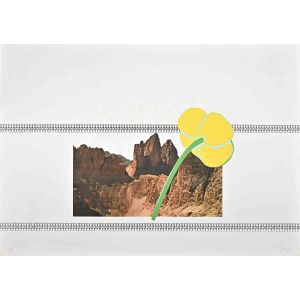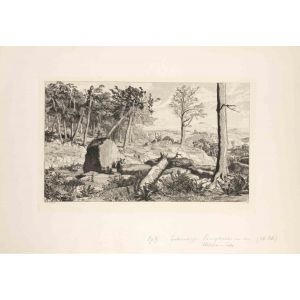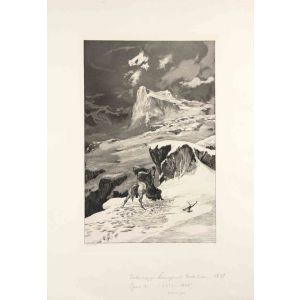La Luxure
Etching, copper plate,1888. Second and final state of two.
Hand-signed, dated and titled in pencil on lower margin. Signed in capital letter also on plate, on lower-left margin and another one in the lower-right corner. Signature of the artist overleaf as a declaration of the authenticity of the print.
Perfect conditions. Passepartout included: 34 x 49 cm
This etching of 1888 eas inserted in the 1904 album "The Seven Deadly Sins" , which was prefaced by Eugène Demolder, a literary, art critic, novelist and a Ensor's friend.
References: A. Taevernier, Graphic works of James Ensor , 1973, Pl. T. 59, pag. 155.
James Ensor (Belgium, 1860-1949,)
A forerunner of 20th-century Expressionism and one of the major figures of the Belgian avant-garde in the late 19th century, James Ensor was a visionary, mystic, allegoric, anarchic artist that loved exploring religious subject matter, political satire, and carnivalesque imagery (surely a source of his inspiration derives from his family’s souvenir emporium that sold grotesque carnival masks).
Etching, copper plate,1888. Second and final state of two.
Hand-signed, dated and titled in pencil on lower margin. Signed in capital letter also on plate, on lower-left margin and another one in the lower-right corner. Signature of the artist overleaf as a declaration of the authenticity of the print.
Perfect conditions. Passepartout included: 34 x 49 cm
This etching of 1888 eas inserted in the 1904 album "The Seven Deadly Sins" , which was prefaced by Eugène Demolder, a literary, art critic, novelist and a Ensor's friend.
References: A. Taevernier, Graphic works of James Ensor , 1973, Pl. T. 59, pag. 155.
James Ensor (Belgium, 1860-1949,)
A forerunner of 20th-century Expressionism and one of the major figures of the Belgian avant-garde in the late 19th century, James Ensor was a visionary, mystic, allegoric, anarchic artist that loved exploring religious subject matter, political satire, and carnivalesque imagery (surely a source of his inspiration derives from his family’s souvenir emporium that sold grotesque carnival masks). Harsh colours and thick layers distinguish his style. His masterpiece is Christ’s Entry into Brussels (1889), a satiric artwork set in the contemporary Belgium and incorporated his trademark style. A very prolific artist produced more than 900 moil paintings, 4000 drawings and 133 etchings, he was a misunderstood genius, admired by artists like Paul Klee, Emil Nolde, Ernst Ludwig Kirchner . He was a founder and leader of Les Vingt (The Twenty), a group whose goal was to promote new artistic developments in Europe.






































Validate your login
Sign In
Create New Account